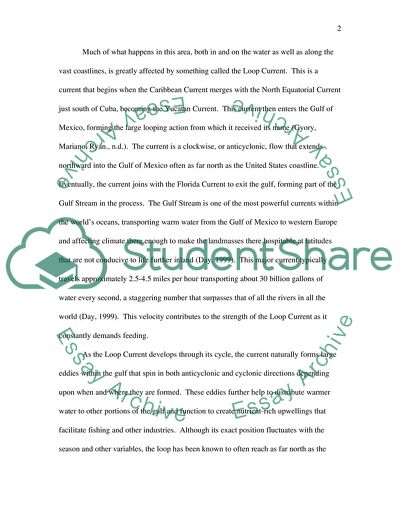Cite this document
(The Loop Current and Its Effect on the Gulf of Mexico Assignment, n.d.)
The Loop Current and Its Effect on the Gulf of Mexico Assignment. https://studentshare.org/environmental-studies/1703006-loop-current-in-the-gulf-of-mexico
The Loop Current and Its Effect on the Gulf of Mexico Assignment. https://studentshare.org/environmental-studies/1703006-loop-current-in-the-gulf-of-mexico
(The Loop Current and Its Effect on the Gulf of Mexico Assignment)
The Loop Current and Its Effect on the Gulf of Mexico Assignment. https://studentshare.org/environmental-studies/1703006-loop-current-in-the-gulf-of-mexico.
The Loop Current and Its Effect on the Gulf of Mexico Assignment. https://studentshare.org/environmental-studies/1703006-loop-current-in-the-gulf-of-mexico.
“The Loop Current and Its Effect on the Gulf of Mexico Assignment”. https://studentshare.org/environmental-studies/1703006-loop-current-in-the-gulf-of-mexico.


